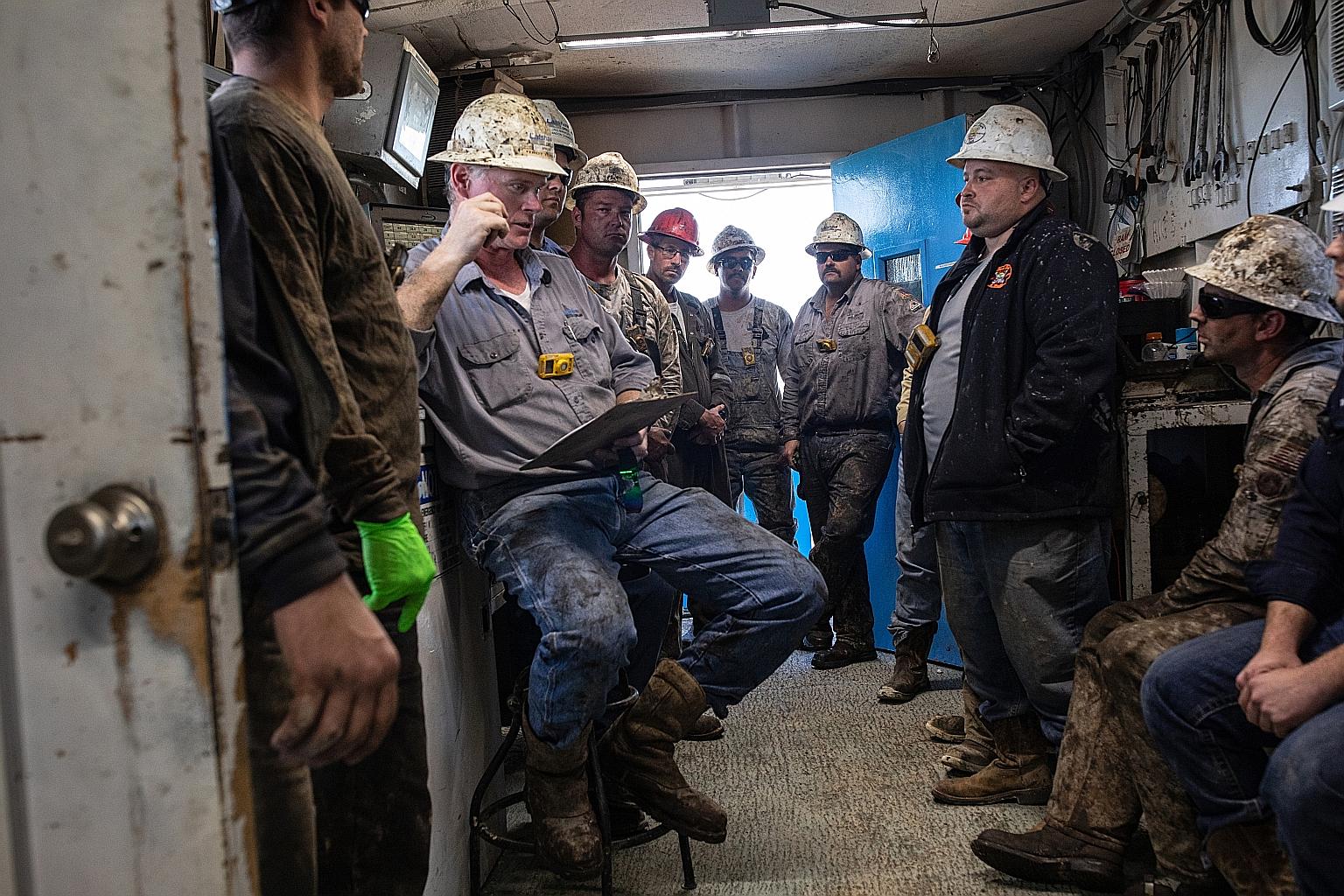Collapse in demand leaves US oil basin facing another bust
Sign up now: Get ST's newsletters delivered to your inbox

Workers at an oil rig last month in Texas, part of the US' Permian Basin, which recovered from a crash, only to face another one now.
PHOTO: NYTIMES
Follow topic:
MIDLAND (Texas) • In just over a month, scores of drilling rigs have been dismantled and tucked away in storage yards. Pump jacks, those piston pumps that lift crude out of the ground, have seesawed to a standstill as operators shut down wells.
Oil field workers, who dined on strip steak and lobster before energy prices went into a tailspin in March, are now standing in line at a local food bank for the first time.
As the coronavirus spreads around the world, people are no longer commuting to work, flying on planes and going on cruises, smothering the demand for oil.
President Matthew Hale of SOC Industries, a pump truck and chemical services firm that has been operating in the Permian for 19 years, said: "We've had our ups and downs, even over the last 20 years, but this feels very different. We're concerned about our industry, survival and what survival is going to look like."
The Permian Basin, which stretches across Texas and New Mexico and is almost as big as Britain, accounts for one of three barrels of oil produced in the United States.
The region has a storied history.
It provided much of the oil for the US and Allied effort during World War II. In the 1970s, the basin created so many millionaires that many drank champagne out of cowboy boots and had trouble finding places to park their private planes.
That was followed by a crash, after which a popular bumper sticker appeared everywhere: God Grant Me One More Oil Boom and I Promise Not to Screw It Up.
Another oil boom did come, as Permian production in recent years spurred a global glut, stole market share from Saudi Arabia and Russia and eventually sparked a price war this year.
This boom, too, is ending.
Most companies operating in the Permian have already shut at least 10 per cent of their wells, and, with local spot prices down to just US$5 a barrel, smaller companies are planning to shut all their wells in the coming weeks, executives said.
The Permian produced five million barrels of oil each day early this year, from a modest 850,000 barrels a day at the dawn of the shale revolution in 2007.
Refineries are running out of storage even as they wind down operations, at least temporarily.
Oil from the Permian supports 10 per cent of the Texas economy, including production, services, shipping and refining.
But as the world is stuck with too much oil, and too little demand, this area is experiencing a double shock not seen in modern times.
Chief executive Scott Sheffield of Pioneer Natural Resources, a major Permian producer, said: "The futures market is telling us no one should be drilling any wells.
"I don't think we'll see a lot of drilling until WTI goes back to US$35 to US$40," he added, referring to the West Texas Intermediate benchmark price, which has been trading around US$20 a barrel.
It briefly dropped below zero last month for the first time.
Big companies like ExxonMobil and Chevron will keep producing, but at lower rates of growth.
And as drillers slow down, it will leave an entire network of suppliers, truck drivers, repair shops and scores of other companies adrift.
NYTIMES

